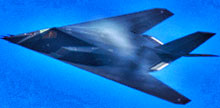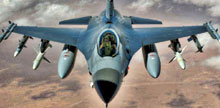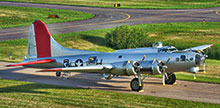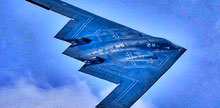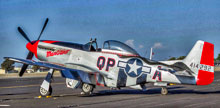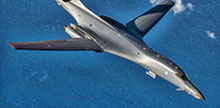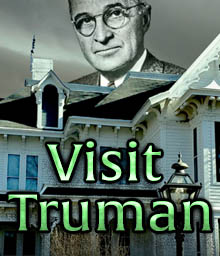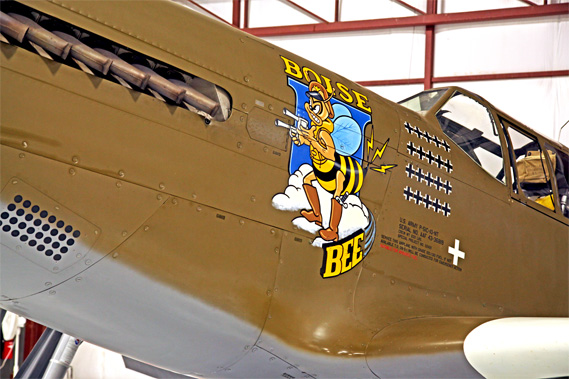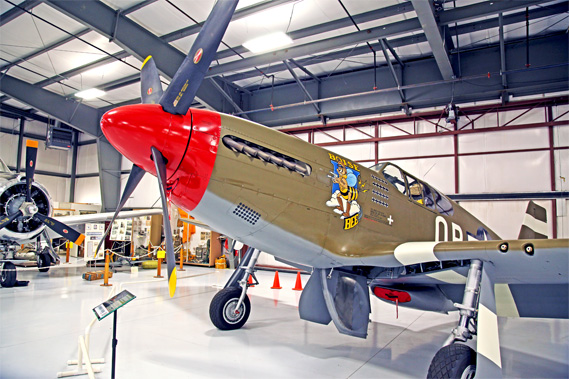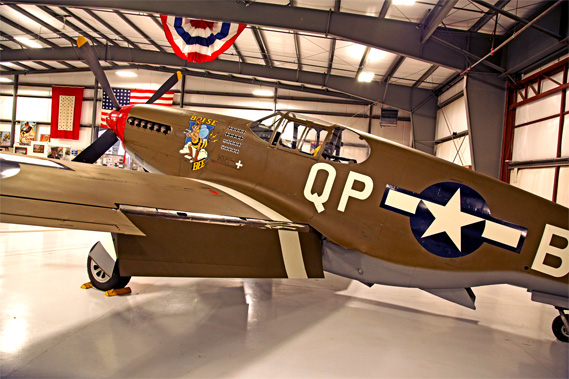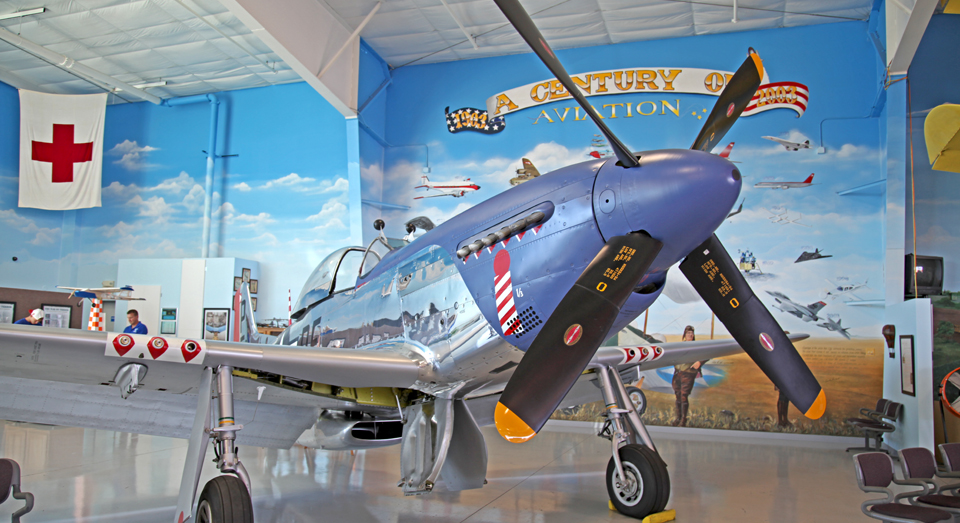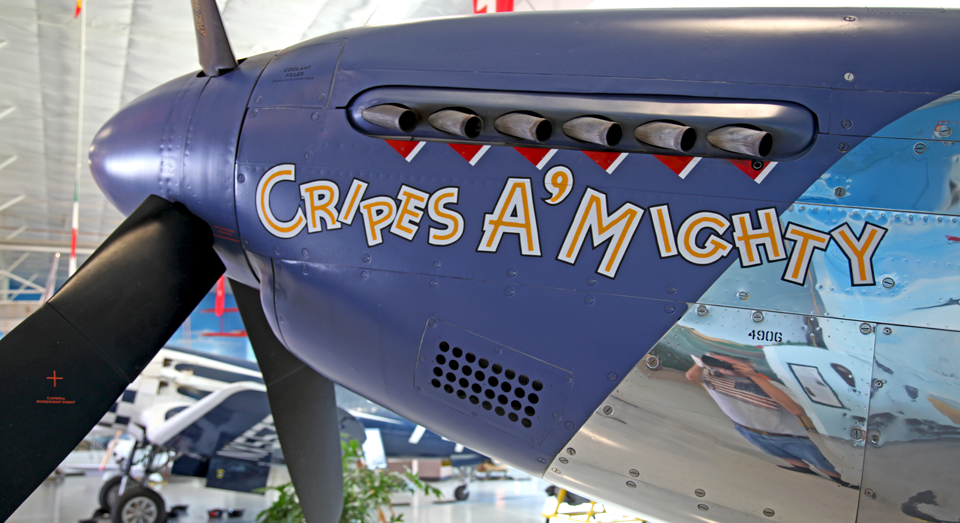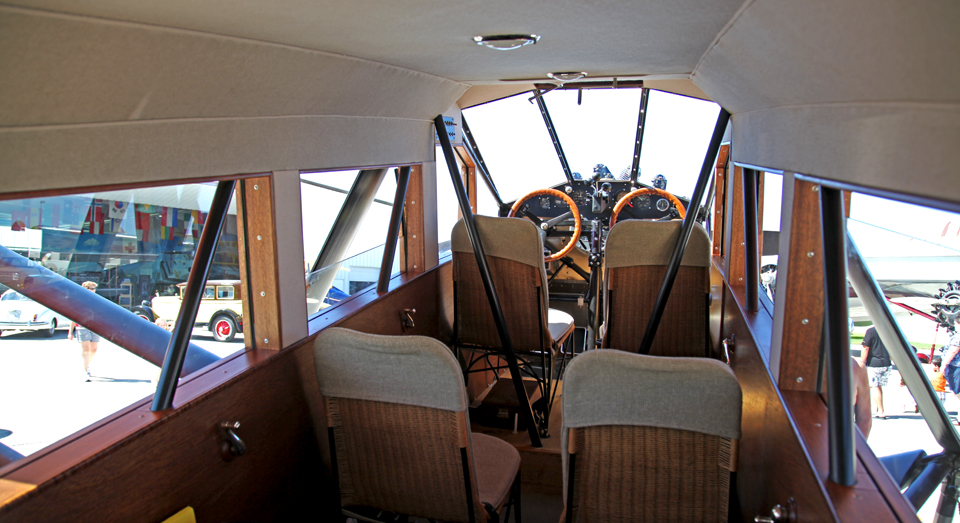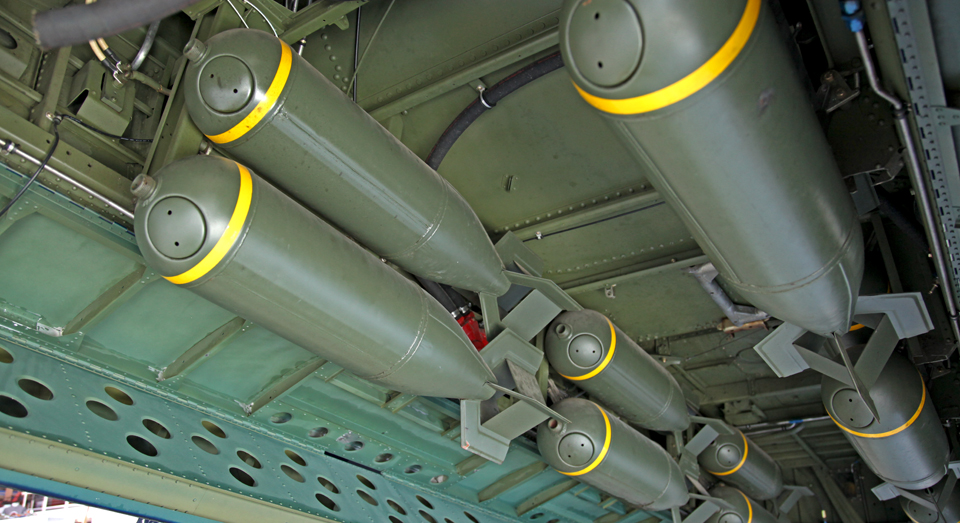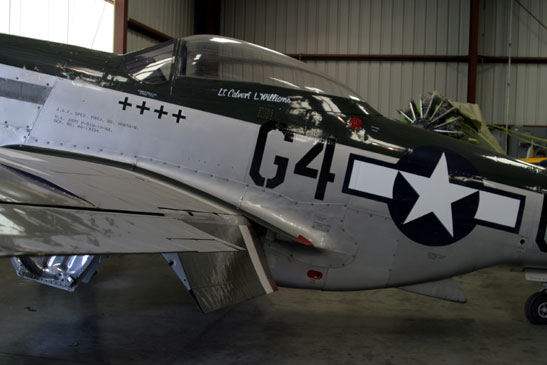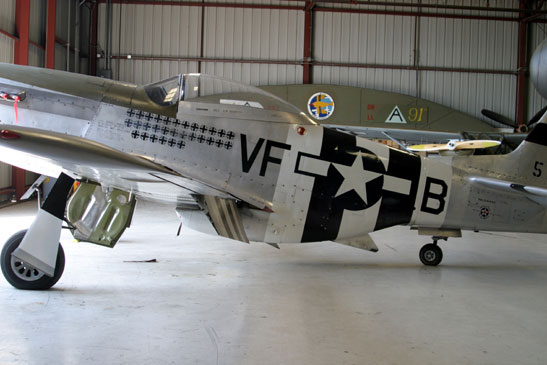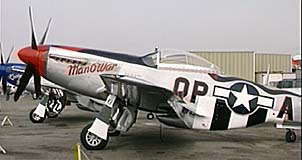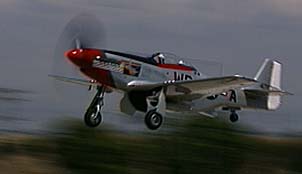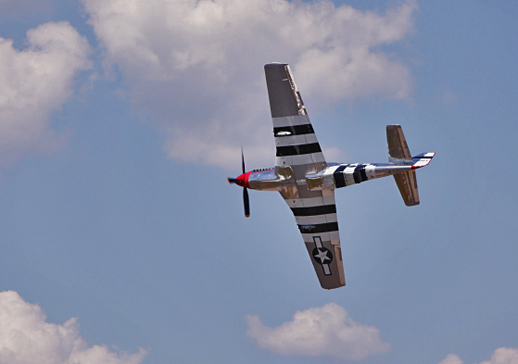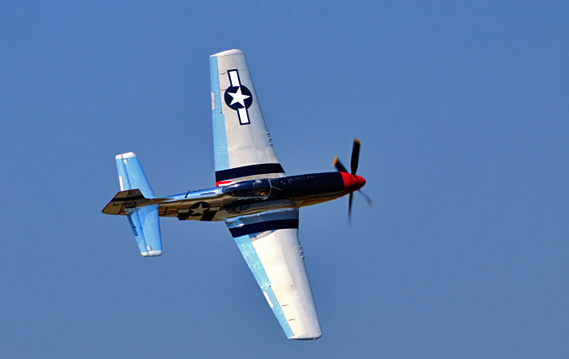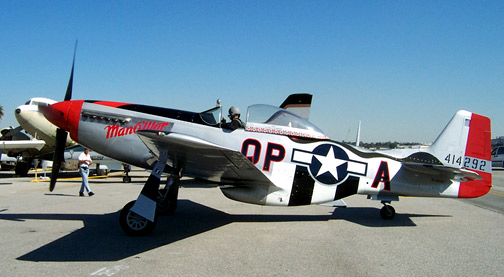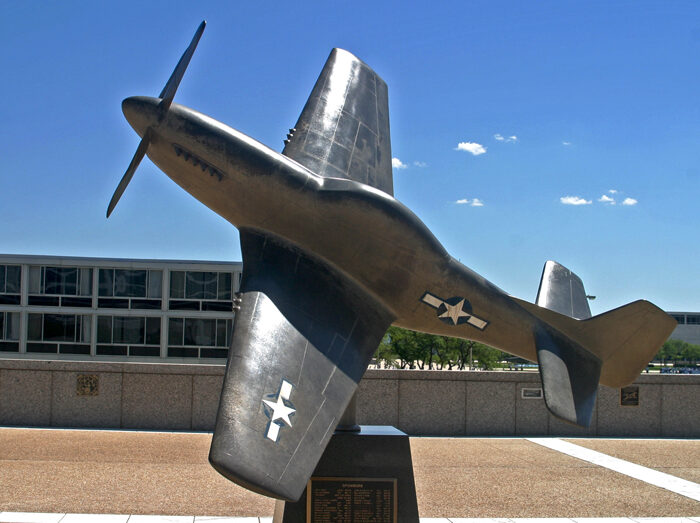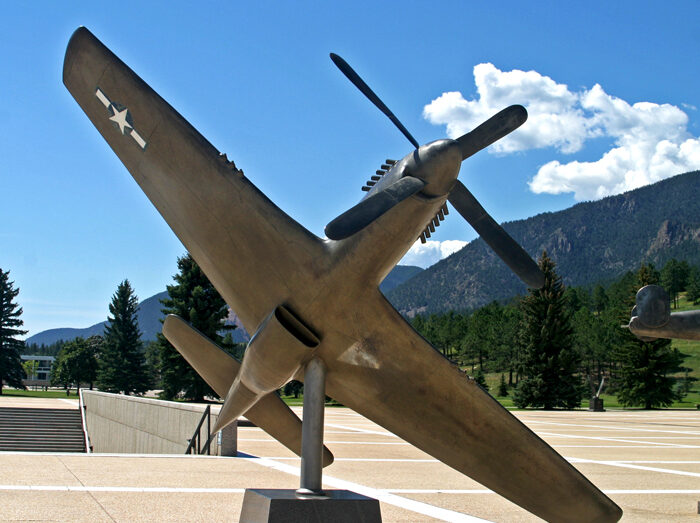P-51 Mustangs
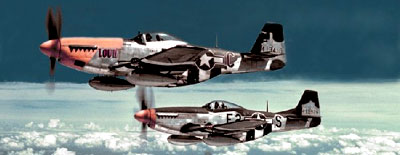
The P-51 Mustang was a long-range, single-seat American fighter and fighter-bomber used throughout World War II, the Korean War and other conflicts. Mustang pilots shot down over 4,900 enemy aircraft in World War II, a total surpassed only by the Grumman F6F Hellcat among Allied aircraft.
The P-51 Mustang was a long-range, single-seat American fighter and fighter-bomber used throughout World War II, the Korean War and other conflicts. Mustang pilots shot down over 4,900 enemy aircraft in World War II, a total surpassed only by the Grumman F6F Hellcat among Allied aircraft.
P-51s escorted bombers in raids over Germany in late 1943, saw service in the North African, Mediterranean and Italian theaters, and participated in limited engagements against the Japanese in the Pacific.
In early 1944, General James Doolittle told his pilots to stop escorting Allied bombers and instead confront the Luftwaffe whenever possible. Mustang groups were sent in ahead of the bombers and hunted German fighters while they formed up. The results were astounding. In just over one week, the Luftwaffe lost almost 20% of its fighter pilots. As later noted by Doolittle, “Adolf Galland said that the day we… went from defensive to offensive, Germany lost the air war.”
At the beginning of the Korean War, the Mustang was used by the United Nations as its primary fighter until jet fighters like the F-86 superseded it. The Mustang was a surprisingly durable presence in the jet age, remaining in service with some air forces into the early 1980s. After the Korean War, many of them were converted for civilian use, particularly air racing.
Going into the second decade of the 21st century, the P-51 continues to be prized by private collectors, fetching in excess of $1 million per plane. An estimated 204 privately owned P-51s remain in the U.S., most of them still flying.
|
Specifications |
|
|
Role |
Fighter |
|
Manufacturer |
North American Aviation |
|
Designer |
North American Aviation |
|
First flight |
October 26, 1940 |
|
Propulsion |
|
|
Single-engine |
1 × Packard V-1650-7 liquid-cooled supercharged V-12, 1,490 hp (1,111 kW) at 3,000 rpm; 1,720 hp (1,282 kW) at WEP |
|
Performance |
|
|
Max speed |
487 m/h |
|
Max cruising speed |
362 m/h |
|
Initial rate of climb |
3,200 ft/m |
|
Service ceiling |
41,900 ft |
|
Max range (external tanks) |
1,650 nm |
|
Weight (empty) |
7,040 lbs |
|
Max takeoff |
11,500 lbs |
|
Dimensions |
|
|
Wing span |
37 0″ |
|
Length |
33′ 4″ |
|
Height |
11′ 1″ |
|
Wing area |
235 sq. ft |
|
Seating Capacity |
1 |
|
Armament |
|
|
6× 0.50 inch M2 Browning machine guns with 1,880 total rounds (400 rounds for each on the inner pair, and 270 rounds for each of the outer two pair), or 4 of the same guns with 1,600 total rounds (400 rpg) |
|

